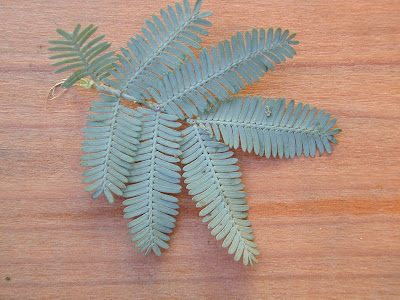This tree was one of the first trees I learned in plant id class years ago at College of San Mateo. As an instructor I know well that it is often just as important to discuss the bad trees as the good ones and of course the common ones.
Why are these and others so common you ask? Well that's a good question and one that needs more time but, common trees do well, are competitive (weedy) and had some feature that was considered beneficial at one time.
It's really amazing how many of these trees there are here in SC. Early January the flower buds start to swell and by late January the county is alive in yellow trees!
The tree has many redeeming values of course, it is fast growing, it booms very early in the spring, the flowers are very yellow and last a very long time, maybe 30 days or more (in the spring flowers last longer if the weather is cool).
Most of the advantages also make it a weed. I have seen more trees ready to tip over that not. They seem to just "go". They have a short life span, maybe 30 years.
The foliage is an attractive silver blue green colored, alternately arranged on the stems and bi-pinnately compound. This means the leaves are divided into lots of leaflets and each leaflet is divided as well. The leaves are evergreen, 3-5" long. The lateral leaflets (8 to 20 of them) are more or less perpendicular to the main axis of the leaf. The leaflets are very small, numbering 20-40 or so on each side leaflet. The leaves are longer, wider, having more leaflets and point more forward than A. baileyana. The stems are either glaucescent or weakly tomentose and angular in cross section.
Fantastic floral display in January through February. The flowers are a very bright canary yellow, in round clusters arranged in a raceme. About 30-40 or so flowers, each about 1/4" diameter, fragrant. Very showy and one of the reasons the trees were so very popular in the day. Blooms for a very long time. Pollen bothers some people. Blooms best on old wood.
Fruit is a legume, 4-6" long, reddish-brown at maturity, They are brown, thin and twisted. But almost reddish late spring making one think the plant might be blooming again though a different color. Everyone of those seeds will germinate.
Bark is smooth, gray to silver-gray. Lots of bad crotch angles and included bark, making for branches coming down during the winds.
Misidentification:
Only likely A. baileyiana which is a smaller tree, more blue or silver colored and has smaller leaves with fewer lateral compound leaflets, see below.
The tree has many redeeming values of course, it is fast growing, it booms very early in the spring, the flowers are very yellow and last a very long time, maybe 30 days or more (in the spring flowers last longer if the weather is cool).
Most of the advantages also make it a weed. I have seen more trees ready to tip over that not. They seem to just "go". They have a short life span, maybe 30 years.
The foliage is an attractive silver blue green colored, alternately arranged on the stems and bi-pinnately compound. This means the leaves are divided into lots of leaflets and each leaflet is divided as well. The leaves are evergreen, 3-5" long. The lateral leaflets (8 to 20 of them) are more or less perpendicular to the main axis of the leaf. The leaflets are very small, numbering 20-40 or so on each side leaflet. The leaves are longer, wider, having more leaflets and point more forward than A. baileyana. The stems are either glaucescent or weakly tomentose and angular in cross section.
Fantastic floral display in January through February. The flowers are a very bright canary yellow, in round clusters arranged in a raceme. About 30-40 or so flowers, each about 1/4" diameter, fragrant. Very showy and one of the reasons the trees were so very popular in the day. Blooms for a very long time. Pollen bothers some people. Blooms best on old wood.
Fruit is a legume, 4-6" long, reddish-brown at maturity, They are brown, thin and twisted. But almost reddish late spring making one think the plant might be blooming again though a different color. Everyone of those seeds will germinate.
Bark is smooth, gray to silver-gray. Lots of bad crotch angles and included bark, making for branches coming down during the winds.
Misidentification:
Only likely A. baileyiana which is a smaller tree, more blue or silver colored and has smaller leaves with fewer lateral compound leaflets, see below.
Location:
Again, these are everywhere in Santa Cruz except right up at the coast.







